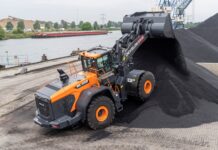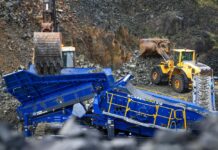When it comes to industries that encounter hazards day to day, construction comes out on top. Research from HSE found that a quarter of the fatal injuries to workers in the UK occurred in the construction industry across 2021/22.
This shows that there’s still work the UK must do to improve safety for construction workers. But even with room for improvement, it makes us wonder where some of the best places in the world are for workers in the industry. In this article, with some insights from van leasing company, Van Ninja, we look at the best places to work in construction, where some of the worst locations are, and what those countries towards the bottom of the safety pile should be looking to change to improve their placing on the list.
Workwear Guru, who supply construction clothing and apparel for sites and companies, conducted a survey in 2021 that looked at the best places to work in construction. These countries were ranked based on the average salaries available, the cost and quality of living in said country, and the safety of working conditions on these sites.

However, this is the overall score and the country with lowest incident rate for accidents is Poland with just 4% of workforce reporting injuries while working. Singapore similarly has a low incident rate of 5%, and the UK also has a relatively low rate of accidents at 8%.
On the opposite end of the scale, the list for the 10 worst places to work in construction features locations all over the globe. The worst place in the world for workplace safety is reported to be Myanmar in Asia with an incident rate of 58%.
On-site safety
With shocking statistics like over half of construction workers in Myanmar – formerly known as Burma – reporting potentially fatal workplace incidents in construction, it shows that globally more attention can still be paid to improving the on-site safety.
Incidents and accidents often happen due to a lack of awareness and preparation. This is why, before even beginning projects, workers should be adequately trained in safety practices that can be implemented to improving job site safety. These should include sections on awareness of the tools they are working with, the cleanliness of the site, and identifying potential hazards before they occur, as well as sections on communication with other members of the workforce to prevent potential hazards forming.
The training shouldn’t just be down to those who’ll be operating equipment either. Site managers could benefit hugely from extra training focusing on proper supervision, monitoring, and reporting of the sites and any potential incident dangers or those that have occurred. Proper management of documentation and administrative processes around the safety of the workers should be reviewed to make sure they are of an appropriate standard.
Having quality equipment to work with, both in terms of machinery to operate and protective clothing, is crucial to ensuring worker safety. If you’re on a site where a drill is required but the drill bit or body is of poor quality, there is the possibility of the operator of the equipment getting put in harm’s way.
Similarly, there should always be the appropriate equipment for jobs. For example, if you have a lot of heavy goods that need transporting, exploring van leasing options can prove the ideal solution rather than stretching your current equipment thinner.
Industry experts are predicting that construction will continue to grow into the new year. The Office for National Statistics (ONS) found that the value for new orders was up 22.8% in only the first quarter of 2022. With more projects for companies to work on, an extra emphasis must be placed on worker safety to avoid any potential incidents that could not only injure your workforce, but subsequently slow down progress.
















